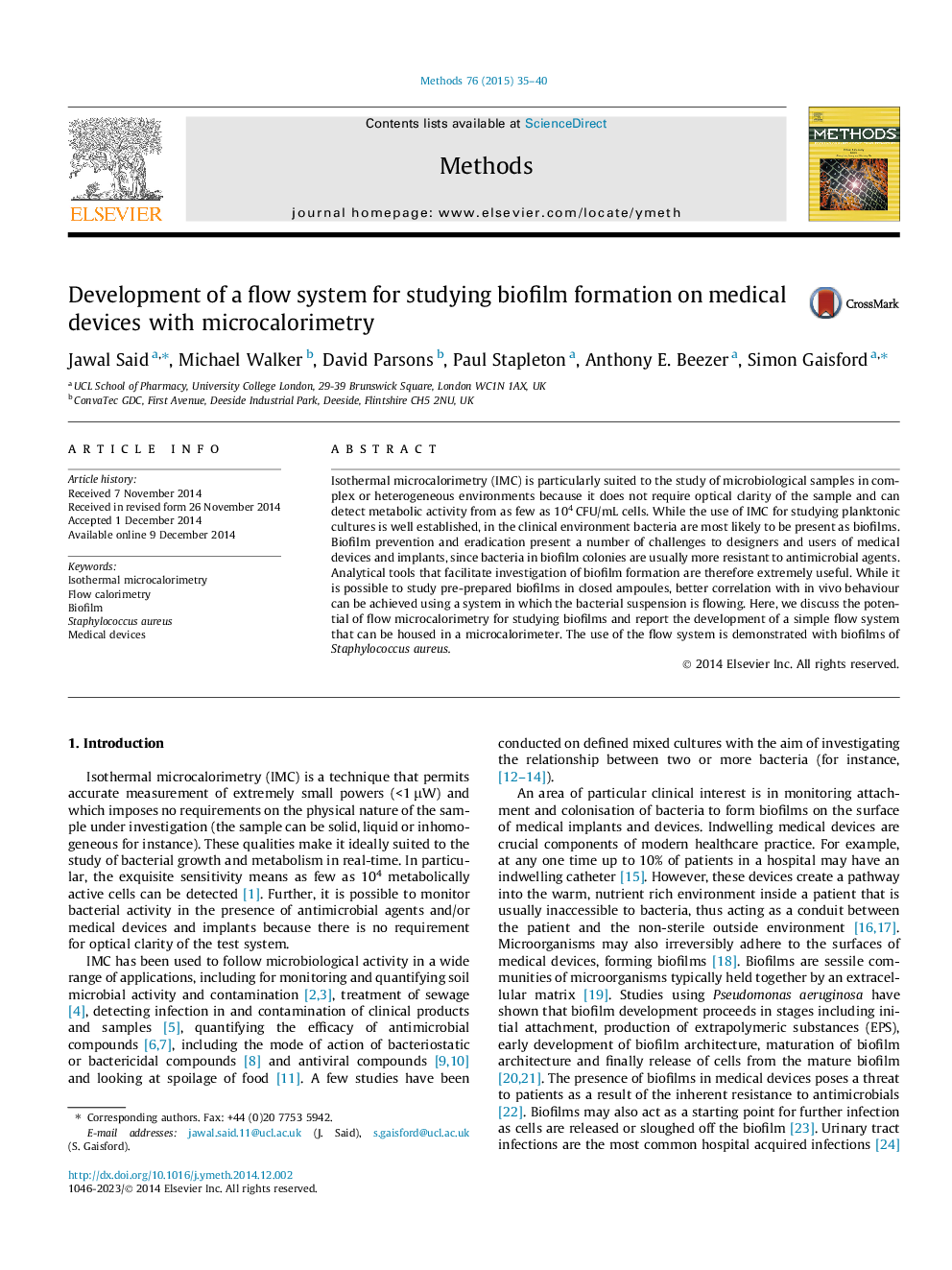| Article ID | Journal | Published Year | Pages | File Type |
|---|---|---|---|---|
| 1993321 | Methods | 2015 | 6 Pages |
•Methods for studying biofilms are compared and discussed.•The advantages of flow microcalorimetry for studying biofilms are introduced.•The design of a simple, low-cost flow microcalorimeter is reported.•The use of the flow microcalorimeter for studying biofilms of Staphylococcus aureus is demonstrated.
Isothermal microcalorimetry (IMC) is particularly suited to the study of microbiological samples in complex or heterogeneous environments because it does not require optical clarity of the sample and can detect metabolic activity from as few as 104 CFU/mL cells. While the use of IMC for studying planktonic cultures is well established, in the clinical environment bacteria are most likely to be present as biofilms. Biofilm prevention and eradication present a number of challenges to designers and users of medical devices and implants, since bacteria in biofilm colonies are usually more resistant to antimicrobial agents. Analytical tools that facilitate investigation of biofilm formation are therefore extremely useful. While it is possible to study pre-prepared biofilms in closed ampoules, better correlation with in vivo behaviour can be achieved using a system in which the bacterial suspension is flowing. Here, we discuss the potential of flow microcalorimetry for studying biofilms and report the development of a simple flow system that can be housed in a microcalorimeter. The use of the flow system is demonstrated with biofilms of Staphylococcus aureus.
Graphical abstractFigure optionsDownload full-size imageDownload as PowerPoint slide
